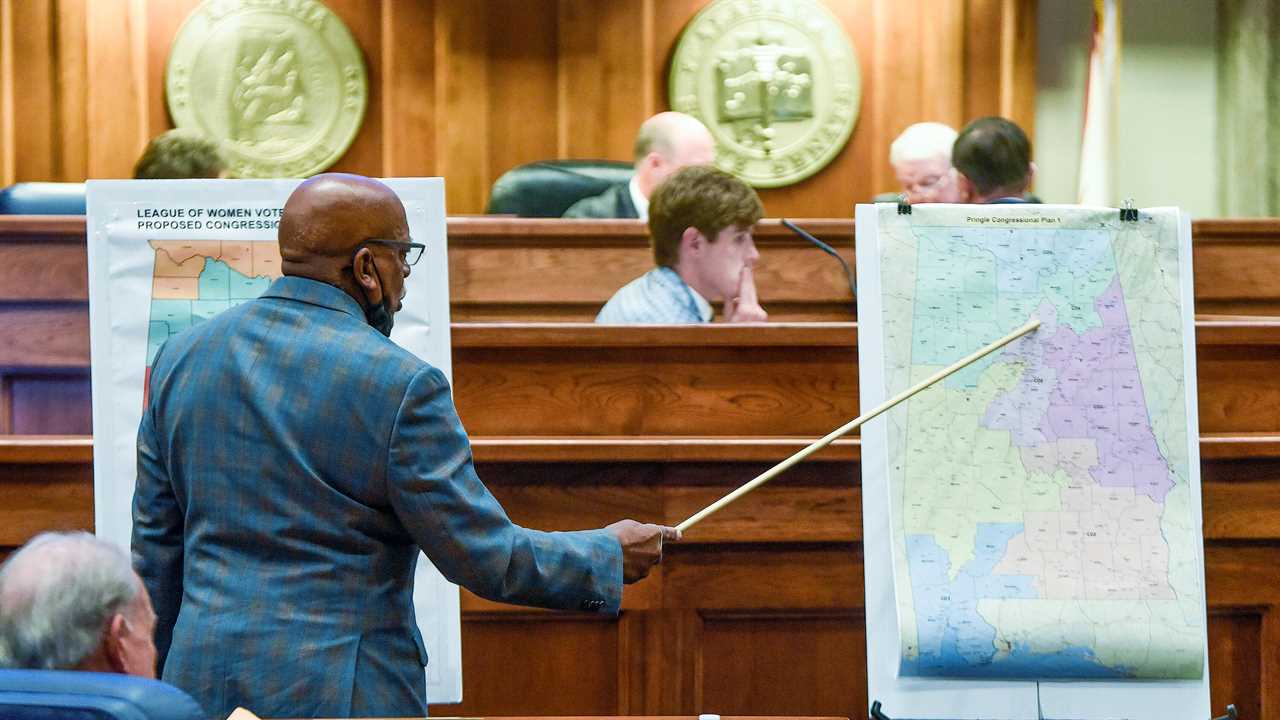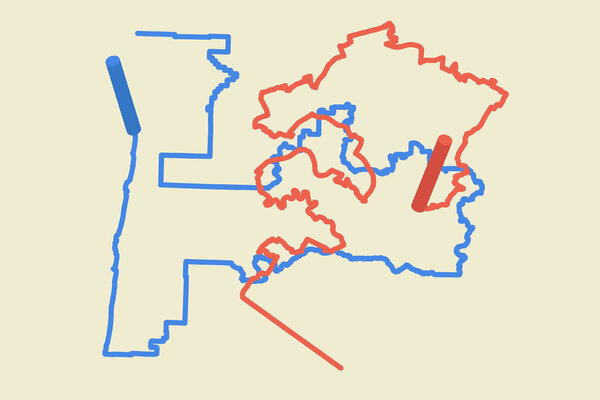
WASHINGTON — A year before the polls open in the 2022 midterm elections, Republicans are already poised to flip at least five seats in the closely divided House thanks to redrawn district maps that are more distorted, more disjointed and more gerrymandered than any since the Voting Rights Act was passed in 1965.
The rapidly forming congressional map, a quarter of which has taken shape as districts are redrawn this year, represents an even more extreme warping of American political architecture, with state legislators in many places moving aggressively to cement their partisan dominance.
The flood of gerrymandering, carried out by both parties but predominantly by Republicans, is likely to leave the country ever more divided by further eroding competitive elections and making representatives more beholden to their party’s base.
At the same time, Republicans’ upper hand in the redistricting process, combined with plunging approval ratings for President Biden and the Democratic Party, provides the party with what could be a nearly insurmountable advantage in the 2022 midterm elections and the next decade of House races.
“The floor for Republicans has been raised,” Representative Tom Emmer of Minnesota, the chairman of House Republicans’ campaign committee, said in an interview. “Our incumbents actually are getting stronger districts.”
Congressional maps serve, perhaps more than ever before, as a predictor of which party will control the House of Representatives, where Democrats now hold 221 seats to Republicans’ 213. In the 12 states that have completed the mapping process, Republicans have gained an advantage for seats in Iowa, North Carolina, Texas and Montana, and Democrats have lost the advantage in districts in North Carolina and Iowa.
All told, Republicans have added a net of five seats that the party can expect to hold while Democrats are down one. Republicans need to flip just five Democratic-held seats next year to seize a House majority.
“They’re really taking a whack at competition,” said Michael Li, a redistricting expert at the Brennan Center for Justice. “The path back to a majority for Democrats if they lose in 2022 has to run through states like Texas, and they’re just taking that off the table.”
Competition in House races has decreased for years. In 2020, The New York Times considered just 61 of the 435 House elections to be “battleground” contests. The trend is starkest in places like Texas, where 14 congressional districts in 2020 had a presidential vote that was separated by 10 percentage points or less. With the state’s new maps, only three are projected to be decided by a similar margin.
Redistricting, which happens every 10 years, began late this summer after states received the much-delayed results of the 2020 census. The process will continue, state by state, through the winter and spring and is to be completed before the primary contests for next year’s midterm elections.

How Maps Reshape American Politics
We answer your most pressing questions about redistricting and gerrymandering.
In most states, the map drawing is controlled by state legislators, who often resort to far-reaching gerrymanders. Republicans have control over the redistricting process in states that represent 187 congressional seats, compared with just 84 for Democrats. The rest are to be drawn by outside panels or are in states where the two parties must agree on maps or have them decided by the courts.
Gerrymandering is carried out in many ways, but the two most common forms are “cracking” and “packing.” Cracking is when mapmakers spread a cluster of a certain type of voters — for example, those affiliated with the opposing party — among several districts to dilute their vote. Packing is when members of a demographic group, like Black voters, or voters in the opposing political party, are crammed into as few districts as possible.
The Republican gains this year build on what was already a significant cartographic advantage. The existing maps were heavily gerrymandered by statehouse Republicans after the G.O.P.’s wave election in 2010, in a rapid escalation of the congressional map-drawing wars. This year, both parties are starting from a highly contorted map amid a zero-sum political environment. With advancements in both voter data and software, they have been able to take a more surgical approach to the process.
Republicans are cautious about doing a premature victory lap in case the country’s political mood shifts again over the next year. Democrats believe that while keeping their House majority will be an uphill battle, they have a stronger chance of maintaining control in the Senate, where Vice President Kamala Harris currently breaks a 50-50 tie.
Republicans also argue that there could in fact be many newly competitive House districts if Mr. Biden’s approval ratings remain in the doldrums and voters replicate the G.O.P.’s successes in elections this month.
Democrats, without much to brag about, accuse Republicans of being afraid of competitive elections.
“Fear is driving all of this,” David Pepper, a former Ohio Democratic Party chairman, said on Wednesday at a hearing to discuss a proposed map that would give Republicans 13 of the state’s 15 congressional seats. “Fear of what would happen if we actually had a real democracy.”
More districts are certain to shift from Democratic to Republican in the coming weeks. Republican lawmakers in Georgia and Florida will soon begin debating new maps.






